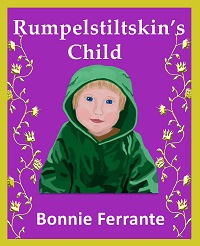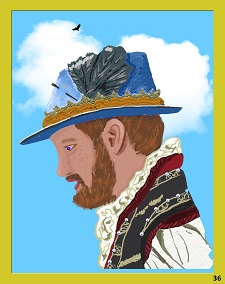| ________________
CM . . .
. Volume xxi Number 25 . . . . March 6, 2015
The first noticeable change is that Ferrante has enlarged her text’s font size, and it is now more compatible with the book’s intended audience. Unlike the first version in which the adult villagers mocked Rumpelstiltskin because of his physical appearance, in the revised version, they are now angry at him because he has ceased to spin straw into gold for them whenever they asked as the act of spinning gave Rumpelstiltskin headaches. Though Rumpelstiltskin is again shunned by the villagers, he is still adored by the children, and he again rescues a child, only to flee the area once more when his act of rescue is misinterpreted as murder. His wanderings again bring him into contact with the young woman who is in need of straw being spun into gold. This time around, however, Ferrante follows the path previously travelled by the Brothers Grimm and has the princess engage in the extended guessing game of Rumpelstiltskin’s name (which, in part, makes the book six pages longer). After being thwarted by the princess, as in the original, Rumpelstiltskin returns home, and this version ends virtually the same as did the original with “Rumpy” receiving an apology and then becoming the village’s orphan-keeper. Ferrante has not modified her book’s basic design with the text still appearing on the left page of each pair of facing pages and the right hand page carrying a full page illustration. Comparing the two versions’ illustrations reveals that Ferrante has made numerous changes to the book’s artwork found on both page types. Overall, the changes are quite positive, especially in terms of the consistency of how Rumpelstiltskin is visually presented as well as in the renderings of the facial features of the book’s other players. So, if both the storyline and the illustrations are stronger, why the “reservations”? As an old TV fast-food ad once asked, “Where’s the beef?” In short, how does Ferrante’s version of the Brothers Grimm tale provide some “value added” to a classic story from folk literature? And the answer is that Ferrante’s retelling simply does not provide any greater sense of value than was found in the original Grimm text. Ferrante needed to take the tale she selected for retelling to a “new”, next level as Jon Scieszka did in The True Story of the Three Little Pigs and The Frog Prince, Continued – but she doesn’t. Recommended with Reservations.
Dave Jenkinson, CM’s editor, lives in Winnipeg, MB.
To comment on this title or this review, send mail to cm@umanitoba.ca.
Copyright © the Manitoba Library Association. Reproduction for personal use is permitted only if this copyright notice is maintained. Any
other reproduction is prohibited without permission.
CM Home |
Next Review |
(Table of Contents for This Issue - March 6, 2015.)
| Back Issues | Search | CM Archive
| Profiles Archive |

 I negatively reviewed Ferrante’s
I negatively reviewed Ferrante’s